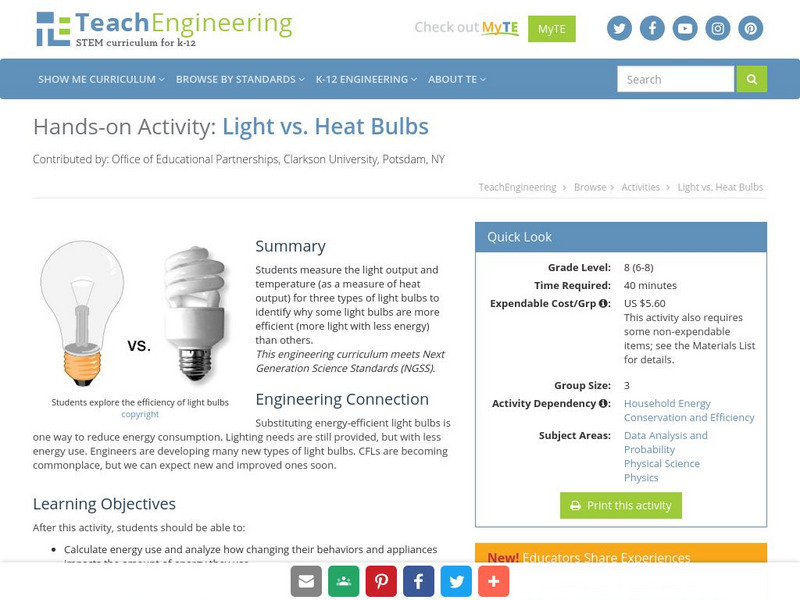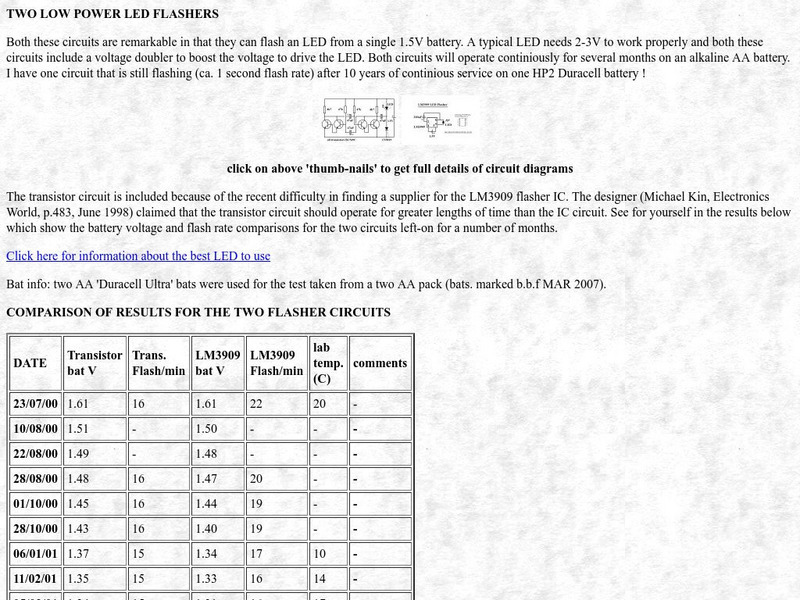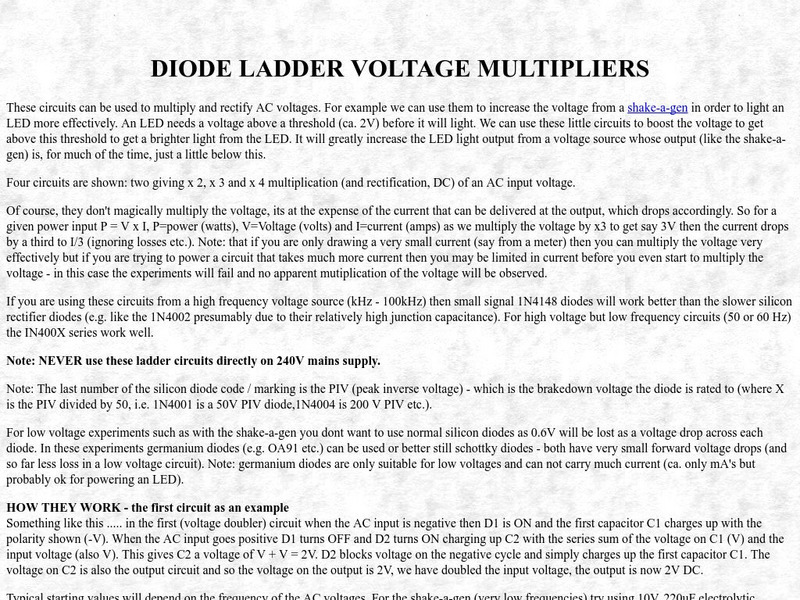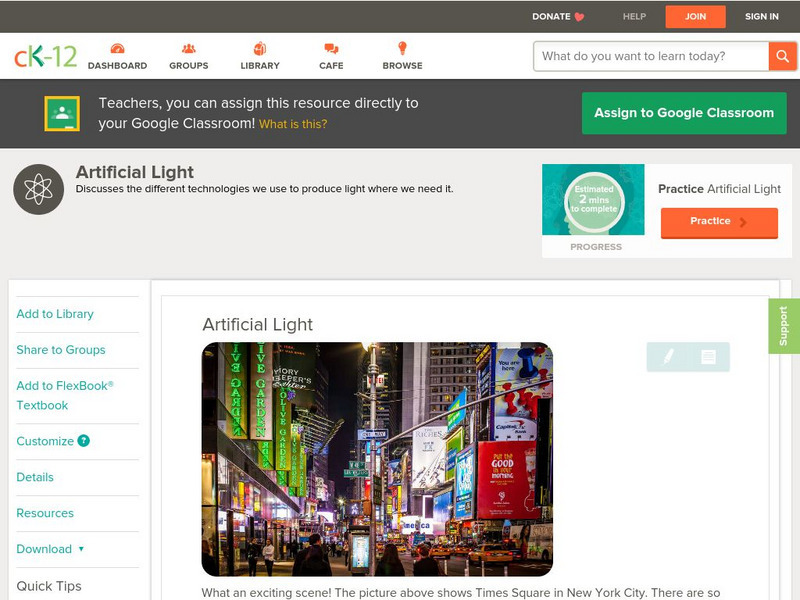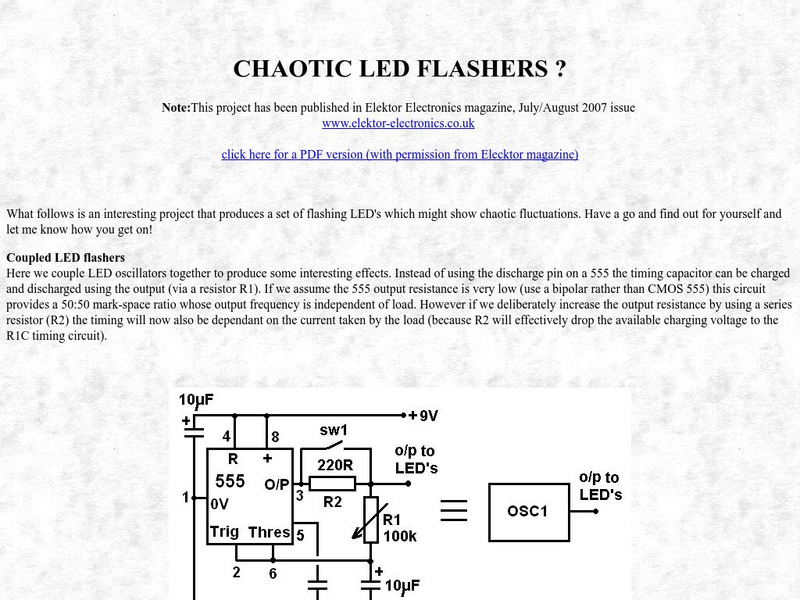Teach Engineering
Household Energy Conservation and Efficiency
Are your household devices eating up a lot of energy? Pupils investigate household energy efficiency through a set of activities. They find ways to improve energy efficiency and reduce consumption. This is the 21st installment of a...
Curated OER
The Technology of Light
Students study the different types of light bulbs. In this exploratory activity students complete several activities and create an electrical circuit.
Curated OER
Systems and Control
Students create a circuit board that demonstrates how a traffic light works. After writing a PIC program for traffic lights, students assemble a circuit board to test the validity of the program they have written. Circuit boards and...
Science Buddies
Science Buddies: Wire Wilt: Light Emitting Diodes Fade as Temperature Increases
In this electronics science fair project, students will investigate how the output of an LED flashlight changes as its temperature increases.
Climate Literacy
Clean: Compact Fluorescent Light Bulbs Cost Benefit Analysis
This analysis activity allows students to calculate electrical usage in home lighting, and create a cost-benefit analysis for cost and energy savings by replacement of incandescent light bulbs with compact fluorescent or LED light bulbs.
TeachEngineering
Teach Engineering: Light vs. Heat Bulbs
Students measure the light output and temperature (as a measure of heat output) for three types of light bulbs to identify why some light bulbs are more efficient (more light with less energy) than others.
Creative Science Centre
Creative Science Centre: Two Low Power Led Flashers
Explains the design of two circuits that can flash an LED from a single 1.5V battery. A typical LED needs 2-3V to work properly and both these circuits include a voltage doubler to boost the voltage to drive the LED. Both circuits will...
Creative Science Centre
Creative Science Centre: Led's
There are so many different types of LEDs on the market (even of the same size and color), how do you tell the difference between them and which one you should use for your particular application? The simple tests descibed here compare...
Creative Science Centre
Creative Science Centre: Diode Ladder Voltage Multipliers
Explains the design of circuits that can be used to multiply and rectify AC voltages, e.g., to increase voltage in order to light an LED more effectively and get a brighter light from it.
CK-12 Foundation
Ck 12: Physical Science: Artificial Light
[Free Registration/Login may be required to access all resource tools.] What artificial light is and five different types, and how each type produces visible light.
Creative Science Centre
Creative Science Centre: Chaotic Led Flashers?
An interesting project that produces a set of flashing LED's which might show chaotic fluctuations.





